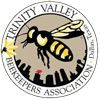Our Yellow Jacket Nest Removal Process in Dallas
Yellow Jackets are common pests that bother Texas (dallas city) homeowners during the spring and they need to be treated with a yellow jacket nest removal in Dallas. The yellow jacket is easily recognizable on sight when someone knows what to look for. They are pests that one does not want to keep around due to their aggressive and persistent nature.
They commonly get mistaken for friendly bees. A bee removal and a yellow jacket nest removal require two different operations. In order to be prepared, our beekeepers need to know what they should expect, so to identify if the nest needs a yellow jacket nest removal is important to assure your safety and a quick process for our beekeepers.
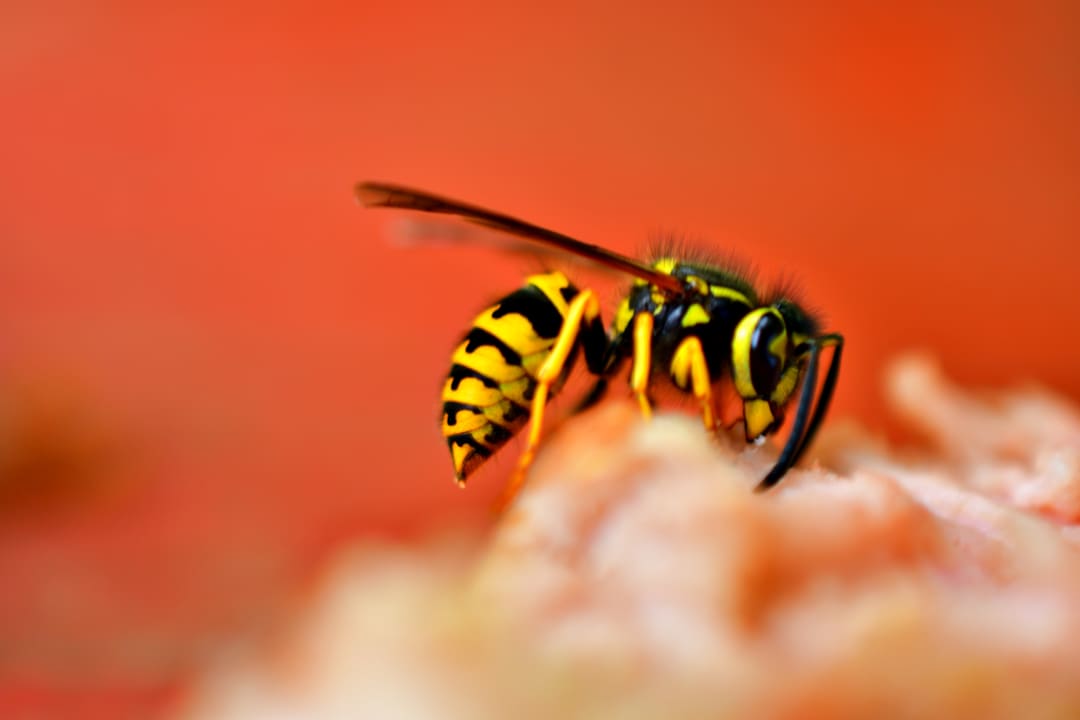
What Does a Yellow Jacket Look Like?
The Yellow Jacket’s coloring is what sets it apart visibly from other wasps. With yellow and black stripes that cover their body, the name is self-explanatory. Their zig-zag coloring is found on the wasp from its head to the abdomen.
Based on their color, some people confuse yellow jackets with the similarly colored Honey Bee. With a closer look, however, the differences are quite clear why there needs to be a yellow jacket nest removal instead of a bee removal. Honey Bees are brown and black and yellow jackets are yellow and black. Where bees have a short, fuzzy body, the Yellow Jacket has a smooth, elongated body that measures from ½ inch to ¾ inch.
The Yellow Jacket has two transparent wings on both sides of its body and two black antennas. The female worker has a smooth stinger that is capable of multiple stings. The queens are orange and black in color and are twice the size of the female workers.
What Makes a Yellow Jacket Different from Other Wasps?
One of the key differences between the Yellow Jacket and other wasps–besides their color–is that their numbers are much greater than wasps.
Size of Yellow Jacket Nest Removal in Dallas
Yellow jackets continue building their nests and laying eggs all season long, unlike other wasps that stop after they reach a preferred size (similar to the size of a softball); foragers continually gather wood fiber to build more and more layers of the nest. For this reason, a yellow jacket nest can reach numbers from 3,000 to 5,000 active workers by the end of the season. To accomplish and maintain this size of the nest, the workers are constantly hunting small insects, nectar, and water to feed their thousands of eggs army.
Yellow Jacket Nests Have Guards
When someone spots a nest of yellow jackets in the ground or structure of their wall, they will typically see a few guards at the entrance and non-stop movement going in and out of the nest. Many people mistake them for the honey bees, since a honey bee nest also has guard bees and non-stop flying activity going in and out of the hive all day long. Unlike honey bees and other wasps, yellow jackets will dig deep tunnels in the ground, usually one to three feet deep, and carve out huge cavities to expand their nests.
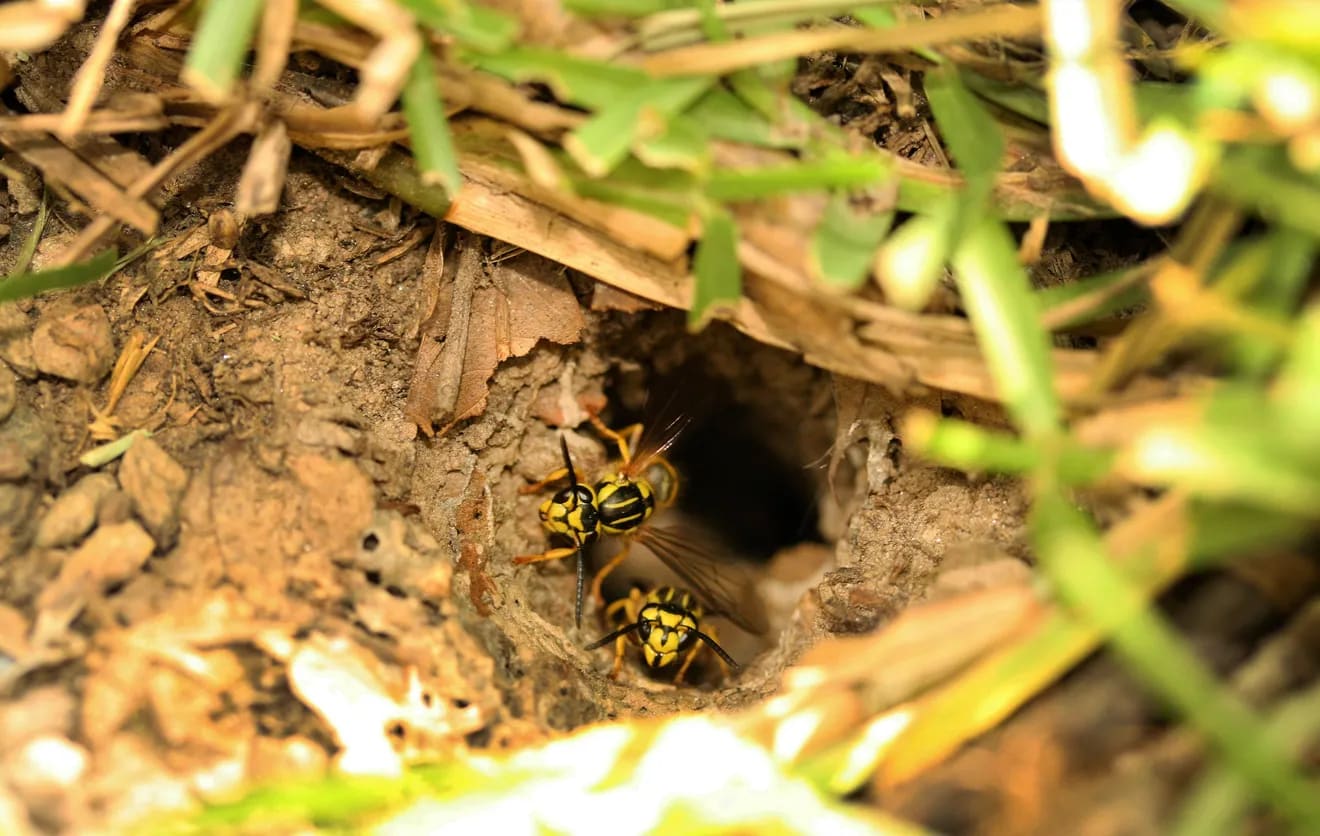
Yellow Jacket Flight Patterns
A wasp’s flight is more lethargic than the yellow jacket. More often, you may see wasps just sitting in their nests and hanging out instead of hunting for food. Most wasps don’t build very large nests and lay fewer eggs, so only yellow jackets exercise more active behavior.
How to Get Rid of a Yellow Jackets in Dallas
Whereas most people may think to look upwards for their nest, these insects generally make their home in the ground.
The best recommendation to Get Rid of a Yellow Jackets in Dallas is to contact an expert because exterminating Yellow Jackets is highly dangeorus for you and your family.
In the spring, the Yellow Jacket queen will dig a hole straight down into the ground and form a large, paper nest that can resemble a miniature parking garage, holding thousands of eggs. Some nests can be as large as a five-gallon bucket up to the size of an aquarium, all while being hidden underground.
Yellow Jacket Nests Are Very Territorial
The territorial nature makes for very dangerous situations when someone is simply mowing their yard, cleaning out their flowerbeds, and tending their garden so they need to be treated with a yellow jacket nest removal as soon as possible.
What happens if you’re stung by a yellow jacket?
If you begin to get stung by them, immediately run inside the house while swatting them off of you. Afterwards, call a professional beekeeper who can do a yellow jacket nest removal.
You never know if you just stepped on or brushed up against an active nest. In just seconds, you may be covered in yellow jackets that will attempt to bite and sting you until you get them off.
Since their sting is much more painful, only a few stings from this little insect can cause someone to panic and go to the hospital. In most cases, a hospital trip is a good idea. But, if you are not allergic, over the counter painkillers usually work. Icing the area where the stung occurred also helps.
Where Yellow Jackets Make Their Nests:
- Eaves/Soffits
- Bay Windows
- Sheds
- Barns
- Vents
- Chimneys/Fireplaces
- Trailers
- Mobile Homes
- Flower pots
- Ivy
- Bushes
- Walls in the home
- Hollowed out trees
- Playground equipment
- Garages
- Attics
- Under ground
- Outdoor furniture
- Cable spools
- Water meter boxes
- Cable boxes
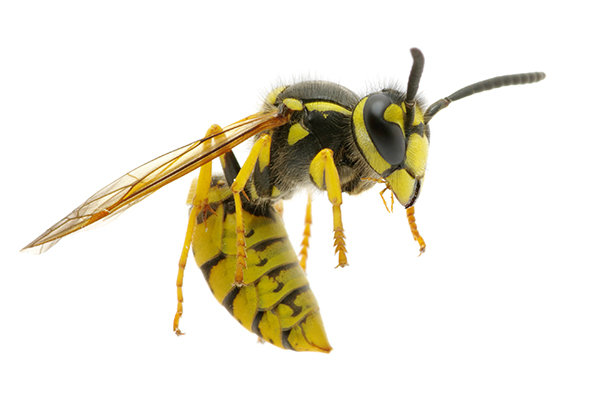
Location of Other Yellow Jacket Nests
Hornets create nests that hang from trees and can look like a football. You typically won’t find a Southern Yellow Jacket’s nest up in high spaces.
A Paper Wasp typically makes a honeycomb-shaped nest that can be found in the eaves of a home or on window ledges, chimneys, porches, and roofs.
Mud Wasps have different types of names like mud dauber or dirt dauber. Mud daubers form a long, round mud tube that can be seen from the outside of a person’s home, inside of eaves, and in attics.
What do Yellow Jackets Eat?
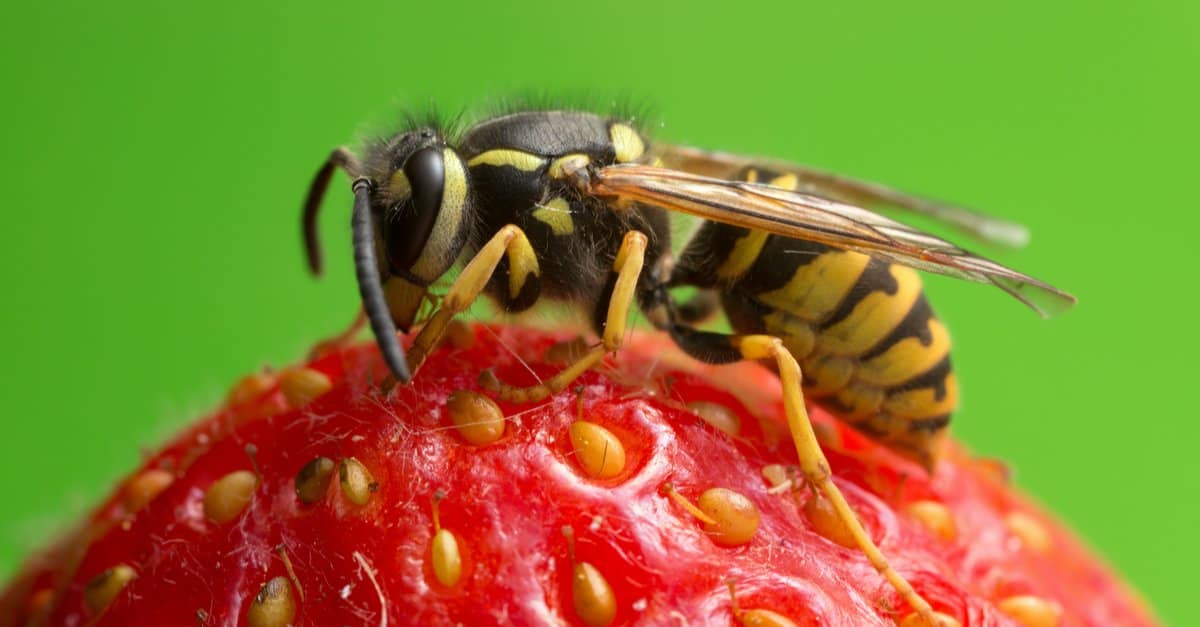
They are also referred to as “Meat Wasps.” During the larval stage, these insects consume protein like crickets, caterpillars, flies, mosquitos, wasps, and bees. Aside from protein, these wasps are also attracted to soda, flower nectar, and fruit.
Why Do Yellow Jackets Attack?
They are an aggressive type of wasp. If the entrance to their nest is approached, the guards will emit an attack pheromone, which has a musty like smell which we can actually smell. Within just seconds, thousands of yellow jackets will flood out of the entrance and attack anything that is not a yellow jacket. This pheromone threat is why there is such a danger when trying to remove a nest on your own.
Dangers of DIY Yellow Jacket Nest Removal
In order to remove a wasp’s nest, you have to approach it. Approaching a Yellow Jacket nest is particularly dangerous because they become incredibly aggressive and have the capability of stinging a victim multiple times.
Someone who is allergic to the venom of these types of insects is susceptible to an intense allergic reaction that can lead to death.
Yellow Jacket Nest Removal Near Me
After calling out Bee Safe Bee Removal, our team of professionals will come to your location and survey your problem.
We will exterminate your Yellow Jackets with a pesticide and then remove the nest from your home. From there, we can offer you access to our preventative program that helps to ensure that your home remains pest-free. Get in touch with us today to find out more about the services that we offer in your area.
Check out this video of a yellow jacket nest.
Our latest jobs


Yellow Jacket Extermination in Webb Chapel Rd, Dallas, Texas 75234
Our most recent extermination was completed in a house of Ryan (a customer) that had a nest of yellow jackets in their garden. The insects where highly aggressive so we had to take extra precautions to exterminate this pest.
Once we finished with the job, we cleaned the area and gave our customers a small information talk about yellow jackets precautions, and how to prevent them.
